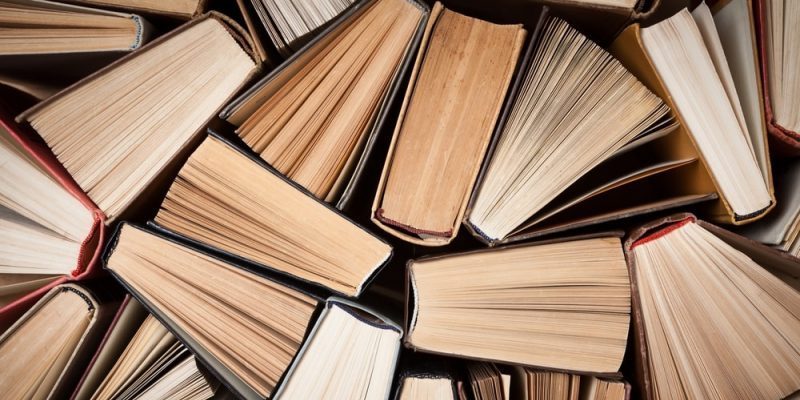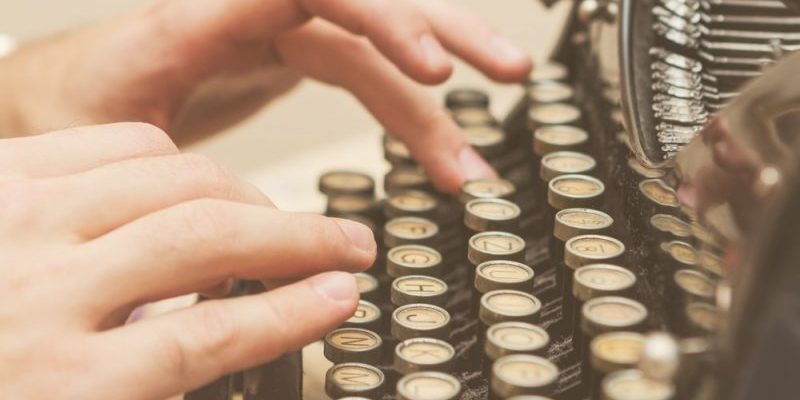We explain what literary language is, the functions it fulfills and its elements. what are its characteristics, classification and examples.
What is literary language?
Literary language or poetic language is called the mode of use of the common and everyday language that is made in works of literature : poetry , narrative and dramaturgy, as well as in other forms of discourse such as oratory. This use of language is characterized by emphasizing how things are said, rather than what is said.
Literary language is governed by rules different from those of ordinary and everyday language , since in the latter the economy of language (how to say more by saying less) and the clarity of the message are always privileged , while literary language pursues, among others things, a standard of artistic beauty.
The latter can be achieved through various techniques and modifications, such as rhyme and musicality, metaphor, repetition or even forms of syntax that are not usual in everyday language. In that sense, literary language is much more free and creative in some things, but more controlled and traditional in others.
Definition of literary language

As said, literary language is a particular formulation of ordinary language , taking into account aspects of artistic, philosophical and aesthetic value, instead of simply communicative ones. It is a special mode of use, whose objective is to produce artistic works with the word, which are known as literary texts .
A poem , a novel , even a speech delivered before a rostrum or a prayer , are examples of the use of language for purposes other than those pursued by a note on the refrigerator or a phone call to the cable company.
In them, language alters its usual rules and explores the limits of what can be said and how, finding new forms of expression of the deep contents of the human spirit.
The poetic function of language
Language scholars such as the Russian linguist Roman Jakobson, propose that verbal language be handled through different functions such as the appellative function (reprimand the other to do something that one wishes) , the expressive function (communicate to whoever listens the state of mind of the issuer) and the poetic function of language.
This poetic function is distinguished from the others in that it is concerned with the communicated message, its forms, its codes , its references and its beauty, instead of focusing on the “useful” result obtained. It is the characteristic function of literary language.
Literary genres

Literary language, common to all written and oral arts, should not be confused with literary genres. Although literary language is always found in action in the latter , they constitute different things.
Literary genres are the categories into which literature is divided, such as poetry, narrative, dramaturgy, and essays . The poetic language is present in each and every one of them .
Types of literary language
The literary language is quite free and admits modulations , changes, personal turns of the author. It even allows him to subvert syntactic rules of the language , as is the case in the novel The Kidnapping of the French writer Georges Pérec, written without using the letter "e" once.
Thus, we could say that there are two aspects of literary language:
- Verse. With a more oral and sonorous tendency, which is used by music , oratory and rhymed poetry, and which emphasizes how words sound.
- Prose. Focused on the way of presenting written information in a chain of meaning, as in novels and stories.
Elements of literary language

Broadly speaking, literary language tends to:
- Use cultisms and infrequent or old words.
- Use figures of speech to embellish the text.
- Contradict the norms of common language.
- Make room for large forms of subjectivity (fiction).
- Use the connotation above the denotation (secondary meanings of the words, which refer not only to the direct and real referent).
Literality and literariness
Literality is the degree of understanding of a word more or less attached to its primary meaning, the one that the dictionary returns first.
A literary text combines moments of literality , that is, of direct reference, with other moments of literariness, that is, of poetic meanings encoded in language and cultural tradition. The literal and the literary, thus, are separate instances of interpretation.
For example: "Our president was a giant"
- Literal meaning. The president was a person much larger than usual for human beings, he suffered from gigantism.
- Literary meaning. The president was a person of great ambitions and methods, powerful, unstoppable, a worthy example to follow.
Rhetorical figures

Rhetorical figures or rhetorical resources are known as the language manipulation strategies or techniques used by literary or poetic authors to print a greater expressive load of language or to reach the heights of beauty in the use of the written language. The main rhetorical figures are:
- Metaphor. A comparison between one object and another, for which one is used to name the other, directly, since they share some characteristic. For example: "The pearls of his teeth", to indicate that they were white, small and beautiful.
- Synecdoche. A type of metaphor in which the whole is used for the part or the part for the whole. For example: "Venezuela rejected the statements of Donald Trump", to quickly refer to the Government of Venezuela .
- Alliteration. The repetition of a series of sounds or words in the same sentence to produce a poetic sound effect. For example, Rubén Darío wrote the verse "with the aleve wing of the slight fan."
- Personification. The attribution of human characteristics to inanimate objects or animals, for example: "The river punished the settlers" or "The dog was deluded with the moon."
- Ellipse. The elimination of some key event or sequence from a story, allowing the reader to recompose the meaning or revealing it later to their surprise.
Difference between literary language and everyday language
In principle, there is no difference between the two and they tend to feed on each other . There are no words more literary than others, nor specific rules about it.
In general , this difference is understood as a matter of use : no one speaks in the street in verse, or with rhetorical figures that complicate or hinder communication , except when reciting a poem, singing a song or giving a speech with the purpose of moving, causing an impression.
Characteristics of scientific language

Another language different from everyday language is technical or scientific language, which uses a separate code because it is a language for experts or the initiated , that is, for those who already handle part of the specialized references.
It is common in scientific or academic publications of any kind, or in conferences and colloquia of specialized professional societies.
Examples of literary language
Some simple examples of literary language are:
- "Walker there is no path / the path is made by walking" - Poem by Antonio Machado ( Spain ).
- "When Gregorio Samsa woke up one morning after a restless sleep, he found himself on his bed turned into a monstrous insect" - Phrase from a story by Franz Kafka (Czechoslovakia).
- “You, who make the great weapons / You, who build the planes of death / You, who build all the bombs / You, who hide behind walls / You, who hide behind desks / I just want you to know / That I can see them through their masks ”- Verses from a song by Bob Dylan (USA).
Abubakr Conner brings a diverse skill set to our team, and covers everything from analysis to the culture of food and drink. He Believes: "Education is the most powerful weapon that exists to change the world." .
Leave a reply
Your email address will not be published. Required fields are marked *Recent post

Sport: What Is It, Types, Risks, Features, Characteristics and Examples

Dogs: Emergence, Features, Characteristics, Feeding and Breeds

Story: Definition, Elements, Structure, Features and Characteristics

